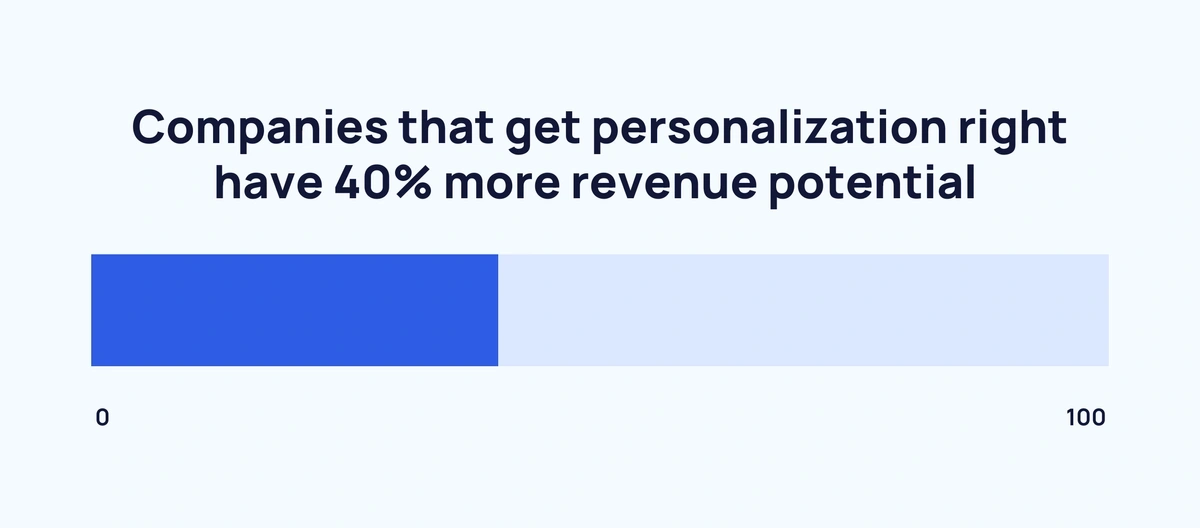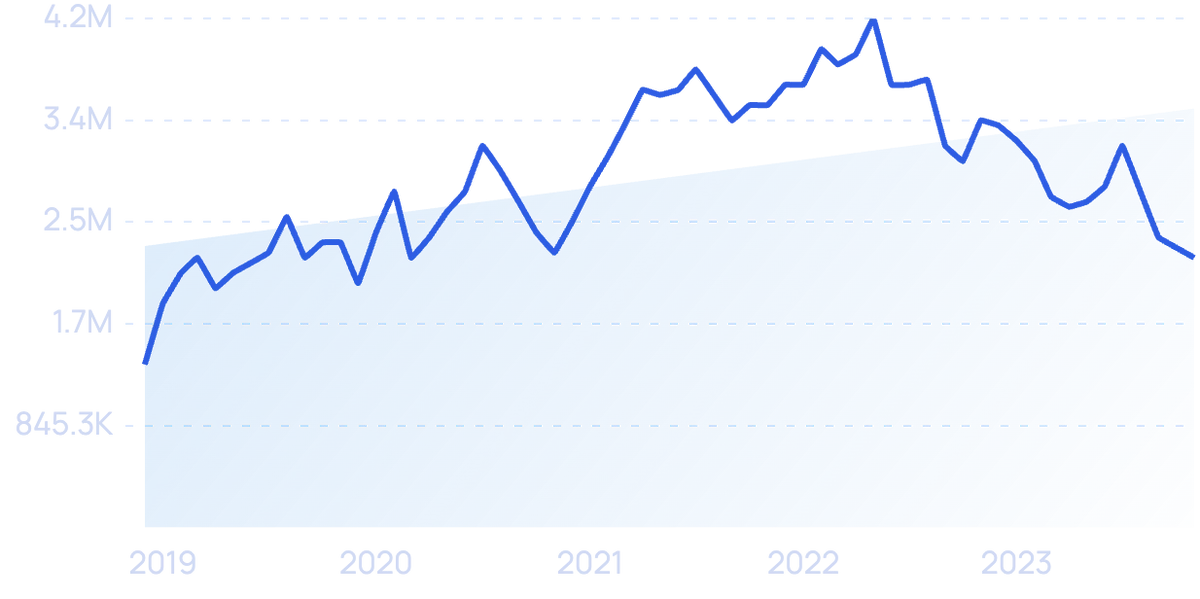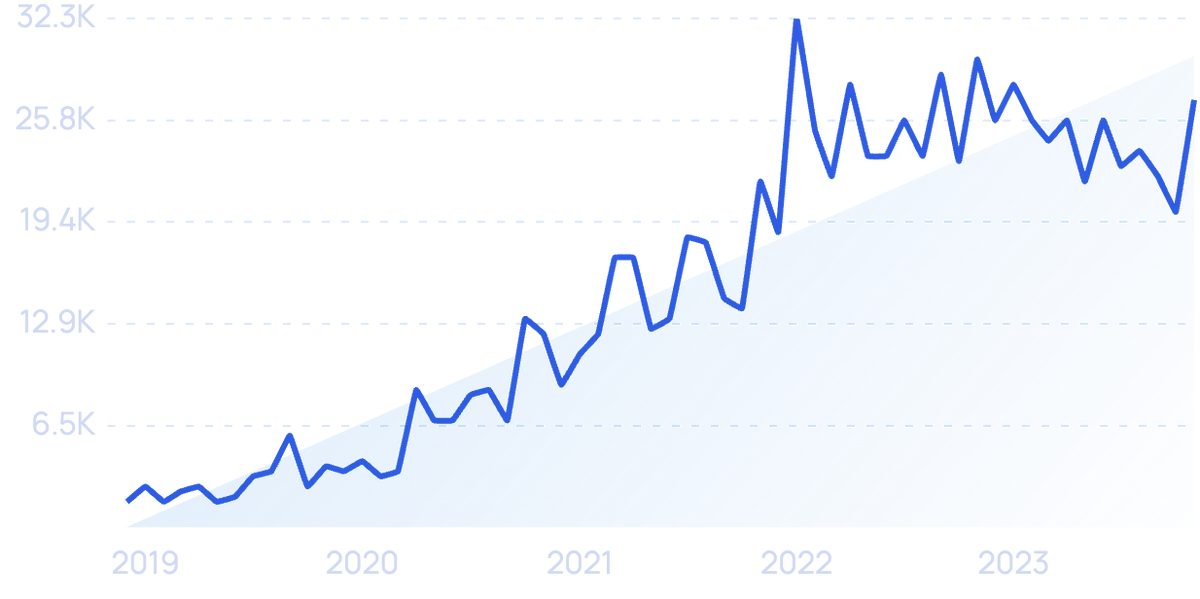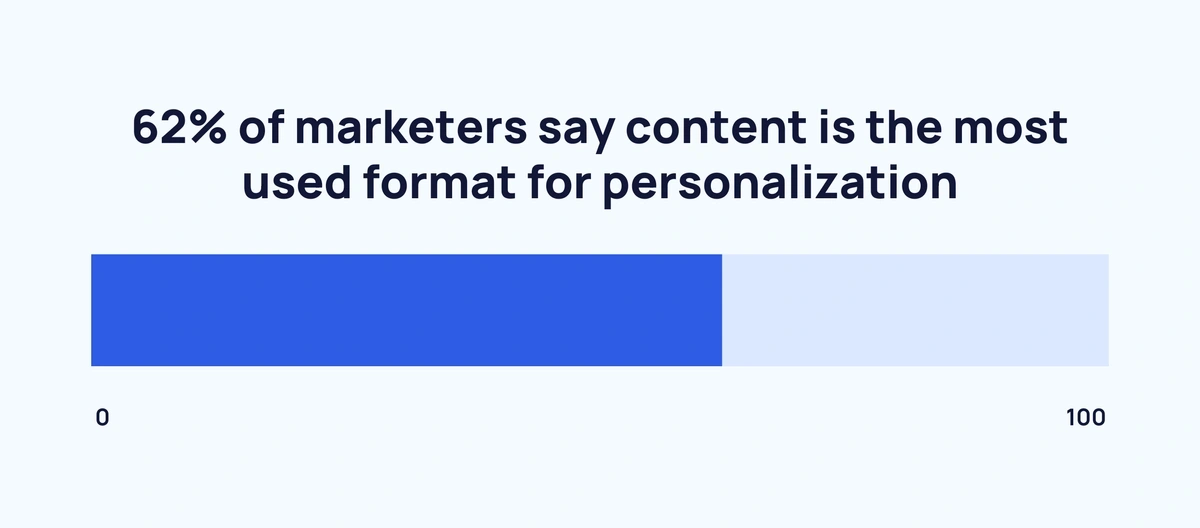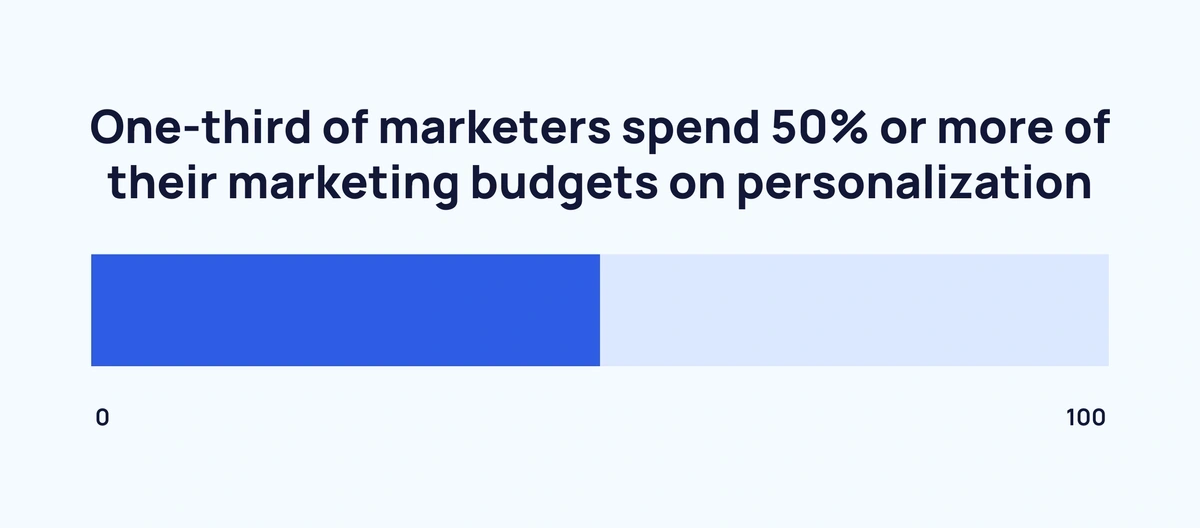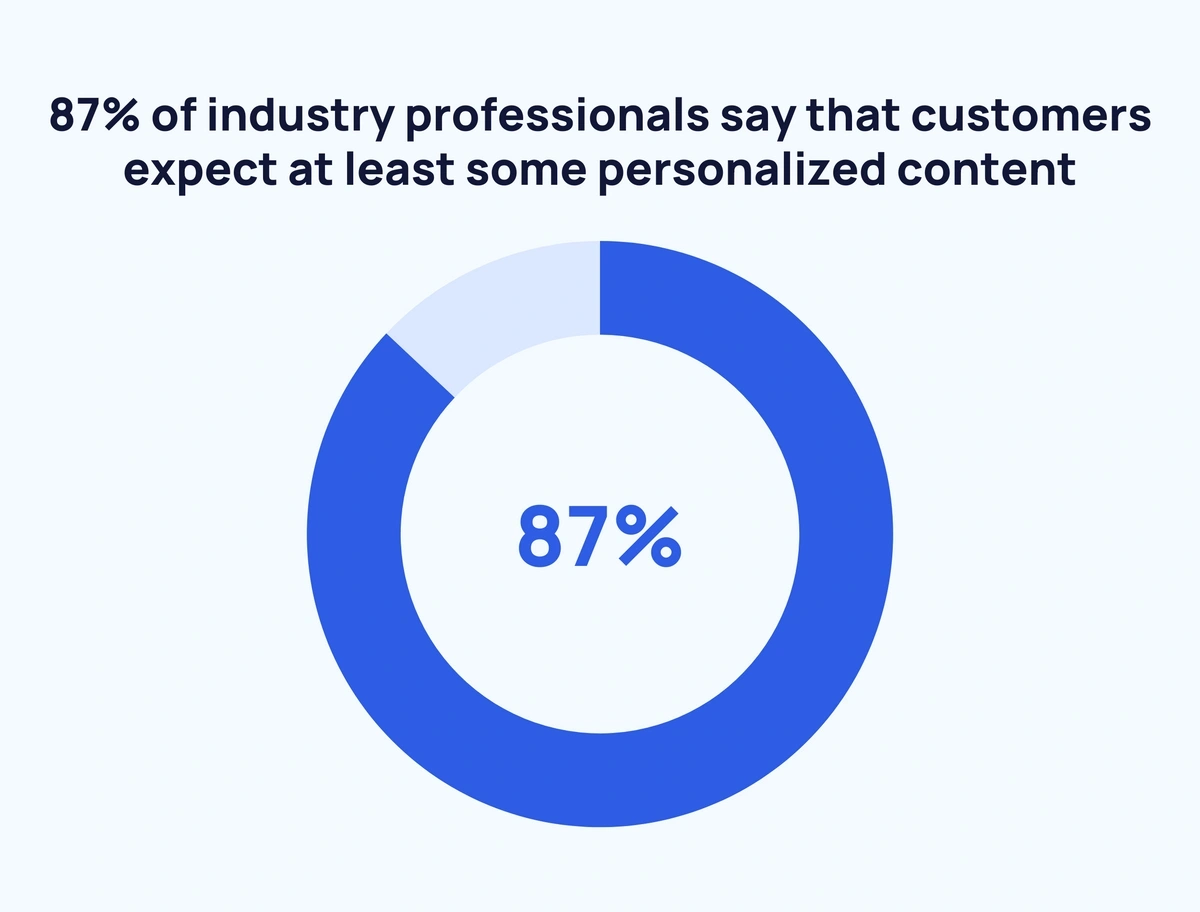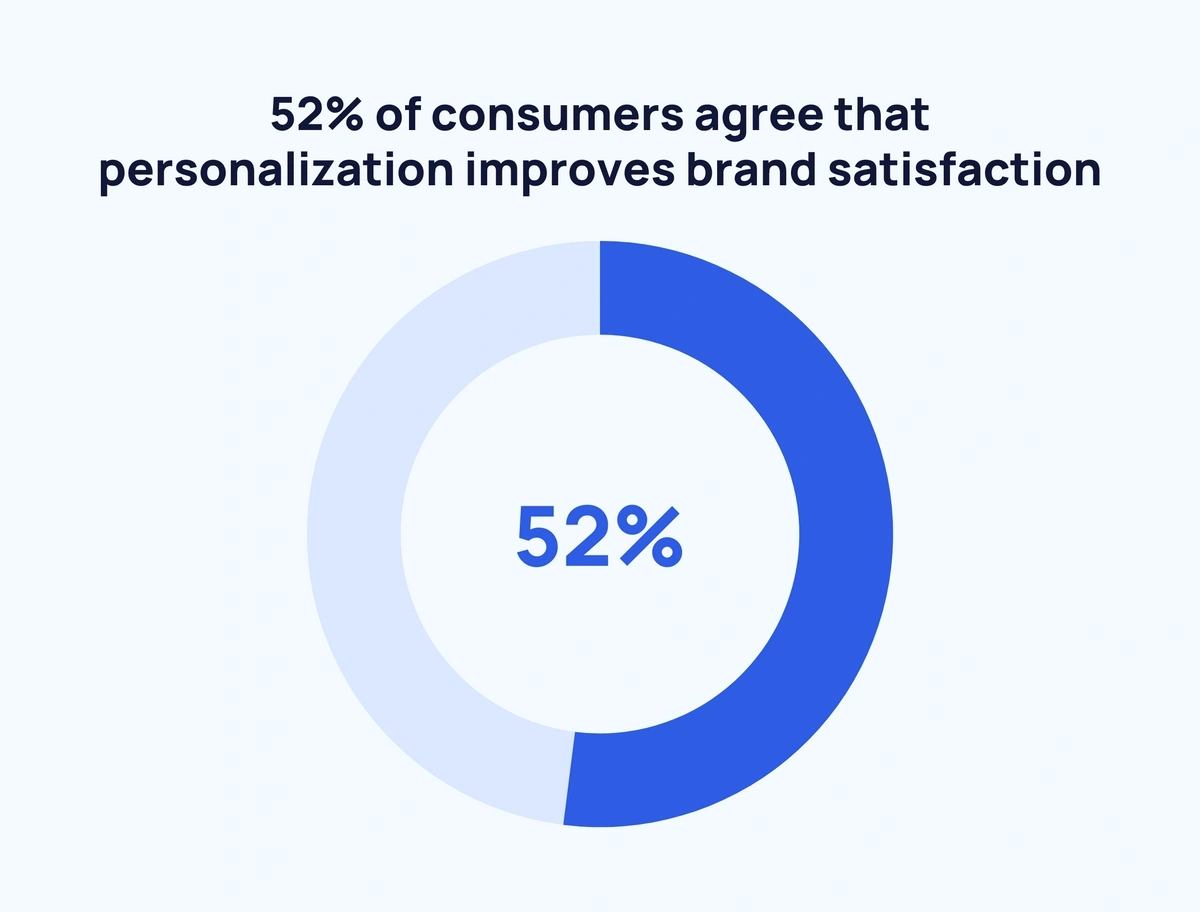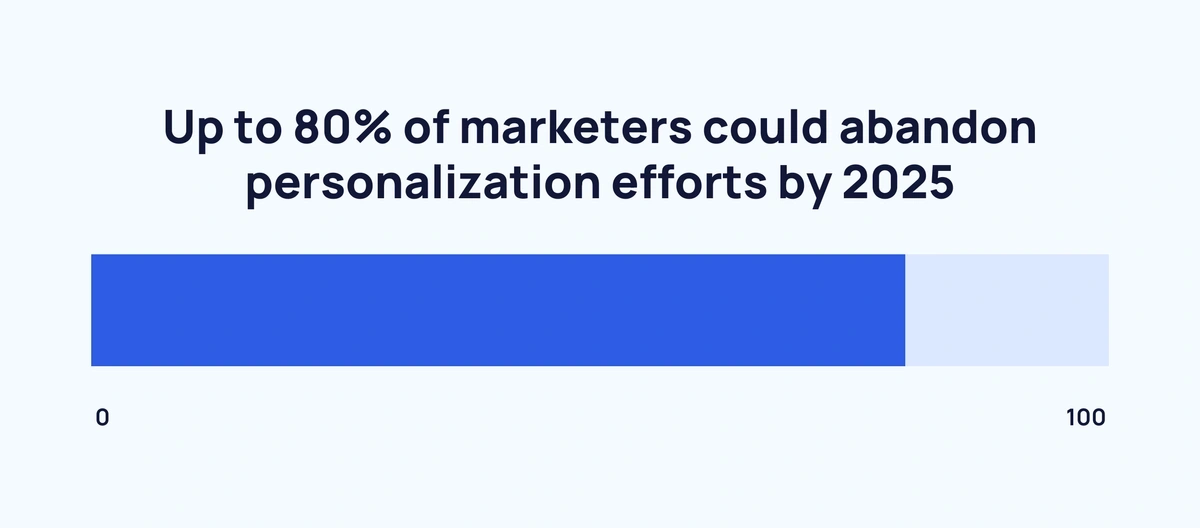
55+ Personalization Statistics (New 2024 Data)
Personalization allows brands to create experiences tailored specifically to individual customers.
In many ways, personalization is a win-win situation for all parties: shoppers are more likely to see messaging and products they actually want to purchase. Businesses get a higher return on their marketing budgets.
However, many of today’s personalization techniques rely on cookies and third-party data. With concern around data privacy at an all-time high, the future of personalization is up in the air.
With that, here is the latest list of personalization stats:
Contents
- Top Personalization Statistics
- Personalization Business Statistics
- Personalization Marketing Statistics
- Personalization Consumer Insights
- The Future Of Personalization
Top Personalization Statistics
Before diving into the complete list, take a look at some of the most interesting data around personalization.
- 89% of marketers see a positive ROI when they use personalization in their campaigns
- 60% of consumers say they’ll become repeat customers after a personalized shopping experience
- 80% of consumers will share personal data in exchange for deals or offers
- 74% of eCommerce companies have a website personalization program
- The recommendation engine market size is projected to hit $12 billion by 2025
- The global personalization software market was worth an estimated $943 million in 2022
- Up to 80% of marketers could abandon personalization efforts by 2025
Personalization Business Statistics
What does personalization look like from a business perspective? Here’s how companies are approaching personalization in 2023.
Companies can generate as much as 40% more revenue from personalization (McKinsey)
McKinsey’s Next in Personalization Report estimated the dollar value behind personalized campaigns. They concluded that collectively, US companies could generate $1 trillion in value if they ramped up their personalization efforts.
3 out of 4 business leaders believe that personalization is critical to success (Twilio Segment)
In the early days of the internet, personalization helped give brands an edge over their competition. Today, personalization isn’t an option — it’s a requirement. 75% of business leaders now describe personalization as “table stakes”.
43% of executives list personalization as a top reason for investing in hybrid experiences (Deloitte)
In the wake of the digital revolution, brands are embracing a new strategy — hybrid experiences. In a hybrid model, brands utilize digital and physical experiences throughout the customer journey.
For example, online retailer Carvana has moved into the hybrid experience model by opening physical locations where customers can pick up cars they purchase online.
Google searches for “Carvana” over the past 5 years.
The recommendation engine market size is projected to hit $12 billion by 2025 (IndustryArc)
Recommendation engines are a key aspect of personalization — they analyze user data to create highly targeted product and service recommendations. The market was valued at just over $1 billion in 2018 and is primed for massive growth over the next couple of years.
The global personalization software market hit an estimated $943 million in 2022 (360i Research)
The personalization software market could grow by 23% from its $746 million 2021 value. The market is projected to reach $2.7 billion by 2027.
Personalized beauty startups raised over $1 billion in funding in 2021 (Statista)
2021 was the biggest year on record for personalized beauty brands. Startups in the space raised $1.04 billion, nearly 50% more than their previous high of $710 million in 2017. Companies like Hero Cosmetics offer personalized skin treatment products.
Google searches for “hero cosmetics” are up 1,580% over the past 5 years.
74% of ecommerce companies have a website personalization program (Yieldify)
Personalization allows ecommerce companies to create tailored experiences for their website visitors. But it doesn’t stop at tailoring product recommendations based on user behavior. Over half of ecommerce companies are also personalizing their email marketing, mobile apps, display ads and instore/POS experiences.
Personalization Marketing Statistics
Personalized marketing campaigns help brands deliver the right ads to the right audience. Which is why they're now a mainstay of many digital marketing campaigns.
Around 4 in 5 marketers see a positive ROI when they use personalization in their campaigns (Adobe)
Only 11% of marketers say they earn less than a dollar for each dollar spent on personalization (in other words, a negative ROI). At the other end of the spectrum, 9% of marketers say they see a $20 or more return on each dollar spent.
Improved customer experience is the top benefit of personalization according to marketers (Adobe)
64% of marketers consider customer experience to be one of personalization’s top benefits. That’s more than improved conversion rates (63%), increased engagement (53%), and increased lead generation (43%).
Around 3 in 5 marketers say content is the most used format for personalization (Adobe)
Inline content (which includes web content and emails) is the most popular method of personalization for marketers. Other popular personalization formats are banner ads, call-out messages, and popups.
Product recommendations and predictive customer service are the top two personalization uses in marketing (Statista)
Adobe reached out to 400 US and UK marketing professionals to learn the exact ways they use personalization in marketing. 46% mentioned product recommendations and predictive customer service. Over one-third mentioned email subject line (34%) and body (36%) personalization.
96% of advertising professionals in the music, movies, and media sectors use personalization in their marketing efforts (Statista)
Personalization in media is huge, with 96% of industry professionals using personalized marketing in the sector. Other industries with 90% of greater adoption rates are arts and crafts, gardening, footwear, outdoors, toys, and apparel.
1 in 3 marketers spend at least half of their marketing budgets on personalization (Adobe)
The amount of money poured into digital experience personalization varies across marketing departments. 18% of marketers spend 10% or less of their budgets on personalization, while just 1% spend 90% or more.
There’s a disconnect between businesses and consumer’s definitions of personalization (Twilio Segment)
85% of businesses say they’re delivering a personalized experience to their customers. But only 60% of consumers say they’re receiving a personalized experience.
Personalization Consumer Insights
From the consumer’s perspective, personalization is all about seeing relevant content, finding the right products, and shopping with brands that understand their wants and needs.
Almost 9 in 10 industry professionals claim that customers expect some personalized content (Marq)
Half of those professionals specify that the vast majority of their customers expect personalized content. Meeting those expectations is quite a challenge — only 32% of industry professionals say the majority of their content is personalized.
76% of consumers say they’re more likely to purchase from brands that personalize (McKinsey)
Personalization is key to the entire customer life cycle. In addition to personalization making consumers more likely to buy, 78% say they’re more likely to recommend brands that personalize as well as make repeat purchases.
66% of customers expect brands to understand their wants and needs (Salesforce)
Two-thirds of customers want to feel understood by the brands they interact with. But the same percentage of consumers (66%) say that brands “treat them like numbers”.
60% of consumers say they’ll become repeat customers after a personalized shopping experience (Twilio Segment)
That’s up from 47% in 2017 — a 28% increase. On the flip side, close to half of consumers say they’re less likely to purchase from a brand after having an unpersonalized experience.
Over half of consumers believe personalization improves brand satisfaction (Twilio Segment)
With eCommerce and DTC giving consumers infinite options, cultivating brand satisfaction is critical. 36% of consumers say they’ll keep shopping with a brand if they have a good experience. One way to deliver an outstanding experience is through personalization.
40% of consumers wish that brands knew more about their style preferences (Twilio Segment)
Personalization means different things to different people. In Twilio Segment’s personalization survey, consumers were asked “What do you wish brands knew more about you?” 40% mentioned style preferences, 24% mentioned household needs, 20% mentioned their economic situation, and 14% mentioned goals and dreams.
80% of consumers will share personal data in exchange for deals or offers (Sailthru)
While most consumers are concerned with data privacy, they’ll gladly trade some of that personal info for a discount. Loyalty programs are an effective way to trade first-party data for special offers. 53% of consumers belong to at least one loyalty program.
Personalization is consumers’ most appreciated element of interacting with luxury brands (BCG)
72% of luxury consumers have personalization at the top of their list of things they’d like to see when dealing with brands. Of those consumers, 39% say personalized treatment in-store is the most important aspect of shopping in person. 26% say targeted recommendations are the most important aspect of digital shopping.
Over one-third of shoppers want more personalization, but over half are concerned about data privacy (Retail Touch Points)
36% of shoppers wish brands would do more to offer personalized experiences. However, their desire for data privacy makes personalization a challenge. 17% of consumers aren’t willing to share any personal data, while 52% are worried about companies knowing too much about them.
Google searches for “data privacy” are up 136% over the past 5 years.
First-time customers want personalization to make it easier for them to navigate stores (McKinsey)
Personalization isn’t just about recommendations. For first-time visitors, navigation is a huge part of satisfaction. It’s also a predictor of them becoming repeat buyers. 75% of consumers expect personalization to make navigation easier both in-store and online. On the other hand, only 40% enjoy seeing new brands show up in their frequently visited websites or apps.
The Future of Personalization
Data privacy has become a concern for consumers all over the globe. When companies can no longer use third-party data, how will they approach personalization?
Around 4 in 5 marketers could abandon personalization efforts by 2025 (Gartner)
Cookies give access to valuable customer data that’s central to personalization. With Google phasing out third-party cookies on its Chrome browser by 2023, marketers are starting to see the writing on the wall. According to Gartner, 27% of marketers view customer data as personalization’s top challenge.
Two-thirds of North American and European eCommerce companies plan on investing more in personalization (Statista)
67% of eCommerce companies say they’ll invest more in the future compared to just 1% saying they’ll invest less. 26% plan on sticking to current personalization investments and 4% of companies don’t invest in personalization at all.
61% of high-growth companies are shifting toward first-party data for their personalization strategies (Deloitte)
With the death of third-party cookies just over the horizon, companies are looking for ways to pivot. 51% of high-growth companies are using first-party data to deliver personalized content.
Wrap Up
Personalization is a multi-billion-dollar industry that’s become widely accepted by businesses, marketers, and consumers alike.
It’s so ingrained in our digital lives that we often don’t realize it’s happening. Our social media feeds, inboxes, and favorite online shopping sites are providing personalized experiences.
While questions surrounding data privacy make the future of personalization hard to predict, one thing is certain: customers want personalization. With billions of dollars at stake, brands are sure to find new ways to make personalization work in the future.
If you found these statistics insightful, take a look at these related pages: Personalization Trends and Key Consumer Behavior Trends.
Stop Guessing, Start Growing 🚀
Use real-time topic data to create content that resonates and brings results.
Exploding Topics is owned by Semrush. Our mission is to provide accurate data and expert insights on emerging trends. Unless otherwise noted, this page’s content was written by either an employee or a paid contractor of Semrush Inc.
Share
Newsletter Signup
By clicking “Subscribe” you agree to Semrush Privacy Policy and consent to Semrush using your contact data for newsletter purposes
Written By


Josh is the Co-Founder and CTO of Exploding Topics. Josh has led Exploding Topics product development from the first line of co... Read more

